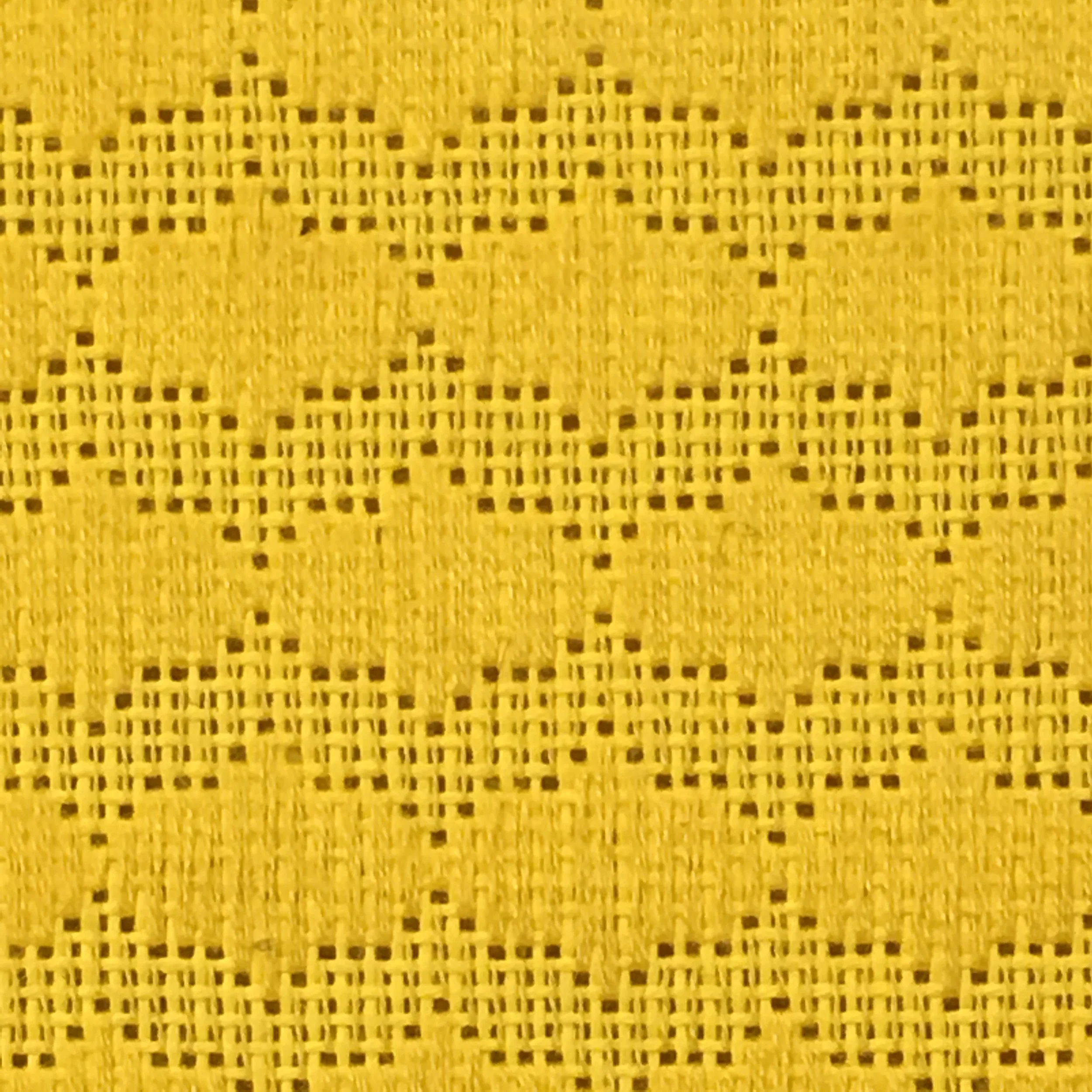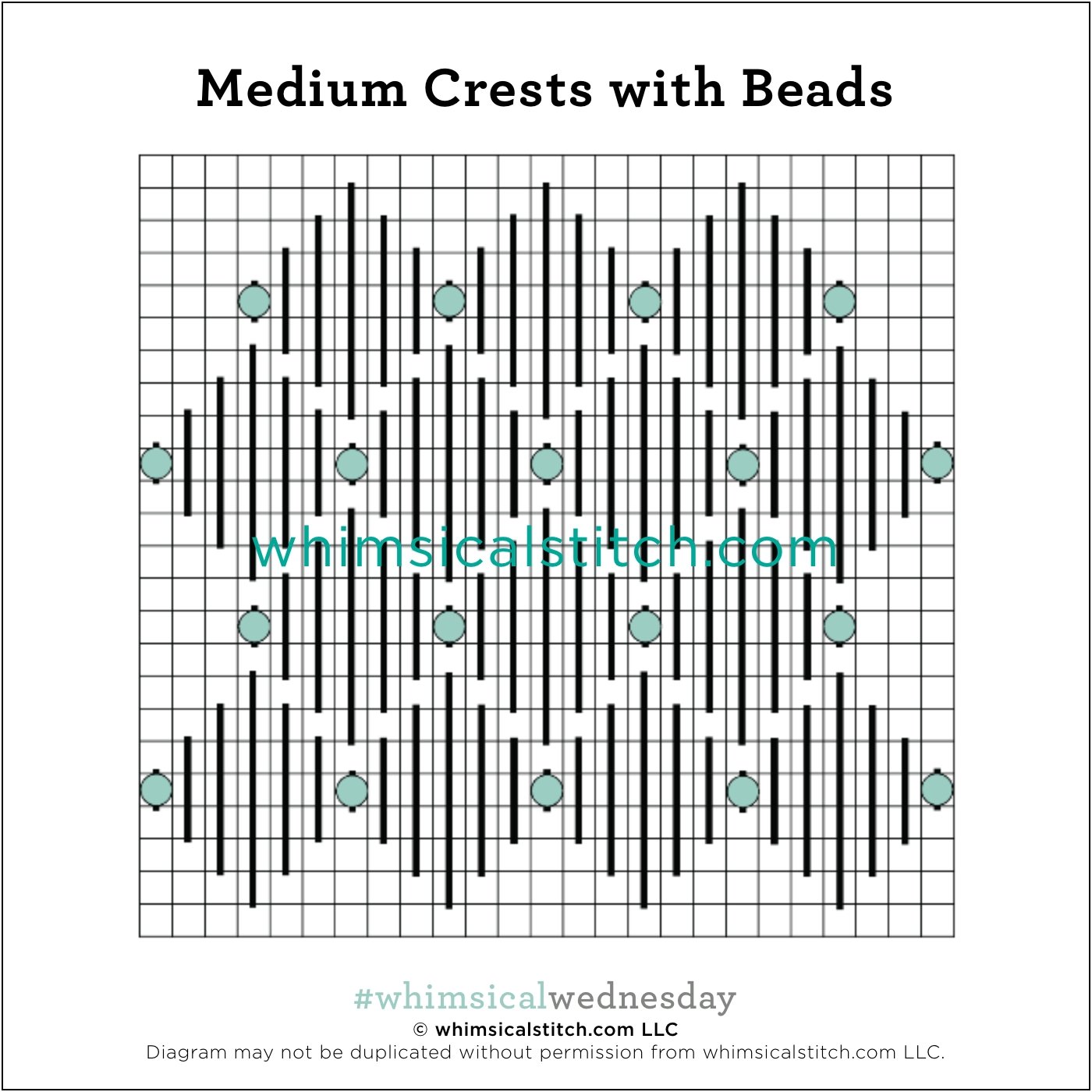Today’s stitch was shared with me by one of my favorite stitchers. One of the many reasons I like it is that I would have never come up with it alone.
A background using a single color of silk floss with different ply counts for individual steps.
It took me a minute (or more) to catch that two stitches share holes with the group of stitches above, so don’t miss that nuance. (And a hat tip to those of you who saw that from the beginning). The stitched sample is five plies of Mandarin Floss (black lines) and two plies of Soie d’Alger (yellow lines). I like the contrast of the weights between the two losses.
Tangent: I learned that trick long ago when I couldn’t find a matching metallic to use as a contrasting thread in a background. My solution was to use different ply counts of the same thread for the two threads. The photo on the right illustrates how that turned out. (It is the Crown Stitch with Accents from page 220 of book 2.)
Back to today’s stitch. It adds subtle direction to an area. It will work well for water with two shades of blue or turquoise Petite Silk Lame. I also look forward to using it for a roof with a solid silk floss for the black lines and an overdyed silk floss for the yellow lines.
It is also scalable by simply changing the height of the black lines. My instinct tells me not to stitch them any shorter than three rows tall so the yellow lines don’t overwhelm the scale, but I want to noodle it a bit.
There is a lot to play with here, and I’m looking forward to it.
As you are auditioning stitches (from any stitch source), count the number of canvas threads on the diagram that match your mesh size. And there you have what an inch of the stitch will look like. Evaluate that against the area where you plan to use the stitch and make your final decision. If you start integrating this step into your stitch selection process, you may be surprised at how many stitches you think are large are much smaller than you realize.
By (sometimes) including this step in my own process, I find I am now integrating much longer stitches than I ever thought I would. I used to think a stitch six rows long was super big. I have very much changed my tune, which has helped me expand my creativity, especially for large-space stitches.
Today’s stitch diagram, along with all other #whimsicalwednesday and #smallspacesunday stitch diagrams, can also be found on a Pinterest board here. Be sure to follow whimsicalstitch.com on Facebook, Pinterest, Instagram, and Twitter.
If you like what you see on this blog, there's more. Mary’s Whimsical Stitches is a series of four books offering contemporary how-to collections of more than 200 stitches (in each volume) for all stitchers, regardless of skill level. All books include updated and sequenced diagrams from this blog, plus a collection of all-new stitches from private lessons and other class projects. Visit here to find a needlepoint retailer that carries my books.
New to needlepoint or looking for a refresher? Please download a handy how-to guide covering basic needlepoint stitches and stitch compensation techniques along with new top-line information on needlepoint materials and tools, how to handle threads, and other helpful needlepoint resources.
whimsicalstitch.com also sells Stitch Guides and Stitch Concepts for Melissa Shirley Designs, Zecca Designs, Sandra Gilmore, Purple Palm, Maggie, and Penny MacLeod, and many more. Click here to see the newest guides and click here to see the entire collection.
I hope you have the perfect spot for this stitch! Please enjoy! Have a wonderful #whimsicalwednesday!
A Note about Diagrams
I use color in diagrams to make them as clear as possible. The primary function of different colored lines is to illustrate a stitch sequence. For example, the layering of colors demonstrates you add them in that order. They can also provide ideas on integrating additional threads (one line for each color). Or, you can use the same thread for all color lines. That's where I encourage you to use your imagination for the space you are stitching!



















